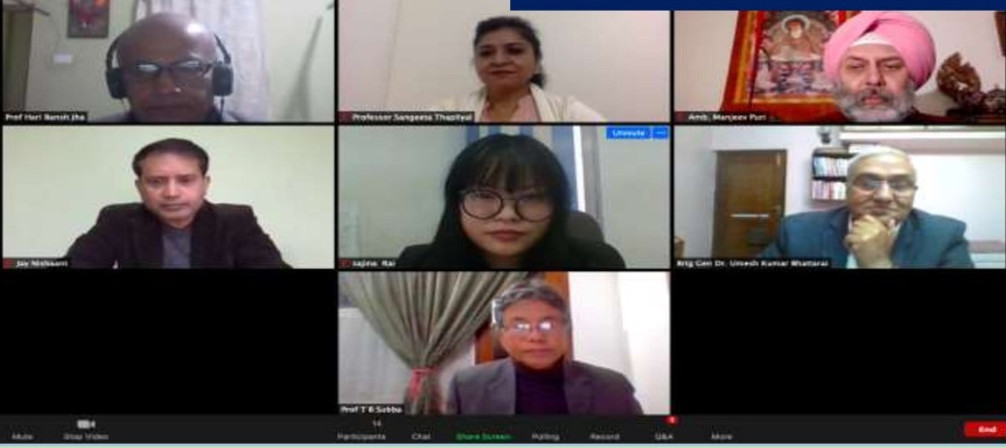29 December, 2020

Nepal and India have long enjoyed historical ties; culture, connectivity, and commerce and are the key factors that have maintained strong Nepal-India relations throughout the history and because of the open border, Nepal holds unique and exemplary people to people relations with India. There have been highs and lows to this relation wherein both Nepal and India have managed to fair well. However, the recent past is suggestive of a rupture in the bilateral relations between these two countries. And a severe paradigm shift has emerged in bilateral ties with the consecutive release of new political map by both the countries claiming the lands Kalapani, Limpiyadhura and Lipulekh.
In the light of recent high level visits from India to Nepal, a dialogue was jointly organized by Asian Confluence and Asian Institute of Diplomacy and International Affairs to explore the new areas and identify the new avenues that will guide the Nepal India relations in the future. The web conference was addressed by Nepali and Indian experts from the field of diplomacy, academy, security and democracy. T. B. Subba, Ex-Vice Chancellor of Sikkim University, suggested on focusing on all the border issues such as in Terai region and not only be limited to Kalapani, Lipulekh and Limpiadhura and suggested revisiting on Indo-Nepal treaty and trade agreements between Nepal and India.
The speakers pointed out the lingering issues and provided very pragmatic recommendations on how to move forward in the changing dynamics of Nepal-India relations. Amb. Manjeev Singh Puri, Former Ambassador of India to Nepal suggested that Nepal can take advantage from India’s growing economy to increase its gross domestic product (GDP). He identified trade, tourism, connectivity, agriculture, hydroelectricity and solar energy key areas where Nepal can gain from India.
Some speakers showed their dismay on how Nepal handled the release of new political map and the Eminent Persons Group (EPG). Prof. Sangeeta Thapliyal stressed on important issues like drugs and human trafficking through open borders which are generally not discussed. She also talked about the Indian funded scholarships to Nepalese students and Indian projects in Nepal and suggested that India should adopt people-centric development approach. On the other hand, Jay Nishaant, a democracy advocate from Nepal proposed both the countries to invest in youth and advocated that India should work closely with Nepal to promote democracy. Brig Gen Dr. Umesh Kumar Bhattarai (Retd) proposed on working on small issues before moving to other larger issues and he also opined that India should support SAARC to revive.
The dynamics in the global politics is rapidly changing and so is the traditional setup of Indo-Nepal relations. Being a small landlocked country, and excessively its trade dependence on India any conflict with India is bound to have immense impact on Nepal. While looking at Nepal’s position one cannot deny that it needs India as a partner in any way. It is destined fate, by geography that one cannot change. Due to geographical proximity, Nepal’s trade and transit route through India is undeniably one of the best out of all its neighbors.
Nepal understands the strategic importance of India and seeks to amend the ties. At the same time India needs to understand the actual needs of Nepal as a development partner and works towards fulfilling those needs. People to people relations between Nepal and India unique and not found elsewhere. The disruption in the government to government relations should not cost those exceptional relations built up over the historical time. Therefore, people’s needs to be at the core while managing the bilateral relations as the experts in the discussion suggested.
Other Research Articles
India’s External Affairs Minister’s 2024 Visit to Nepal: An Assessment
January 25, 2024
India's Neighborhood First Policy: S. Jaishankar's Diplomatic Visit to Nepal in 2024
January 03, 2024
Biodiversity of Gulf of Mannar, SL shipping under threat
February 14, 2023
Sri-Lankan President to leave for Japan to mend fences
September 01, 2022